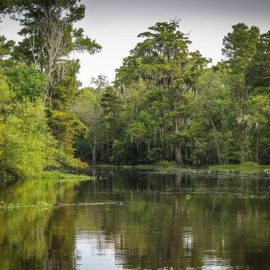
Expect another more active hurricane season in 2021, with 17 named storms, including eight hurricanes, with four of those being major, Category 3 or above, climatologists with the Colorado State University Tropical Weather and Climate Research team said Thursday. The forecast also says there’s a 44% chance of at least one major hurricane making landfall somewhere along the Gulf Coast from the Florida panhandle westward to Brownsville, Texas. The average for such a landfall over the last century is 30%.
nola.com

The chance of getting hit is up as well. Overall, we are at 69% with the average at 52%. The East Coast is at 45% with the average at 31%. The Gulf was not called out specifically. Also, El Nino is not expected to be a factor this year.
Climatologist Phil Klotzbach, who leads the research team, said the absence of El Niño conditions in the eastern Pacific Ocean is a key factor for the more active season. El Niño conditions mean that the average surface water temperature is higher than normal. When present, those conditions often create westerly upper level wind shear in the Caribbean Sea and tropical Atlantic Ocean that disrupts the formation of the thunderstorms that can form into tropical storms. Klotzbach said sea surface temperatures in the tropical Atlantic are near long-term averages, while subtropical Atlantic sea surface temperatures are much warmer than average. The warmer subtropical water temperatures occur in an area where tropical storms are likely to get their start, and are another factor in the prediction for an active season. The forecast says that weak La Niña conditions — cooler than average sea surface temperatures — are occurring in the central and eastern tropical Pacific. “While these waters may warm slightly during the next few months, CSU does not currently anticipate El Niño for the peak of the Atlantic hurricane season,” the forecast said.
Computer models seem to be tracking the same as in 1996, 2001, 2008, 2011 and 2017.
“All of our analog seasons had above-average Atlantic hurricane activity, with 1996 and 2017 being extremely active seasons,” Klotzbach said. The team said the total hurricane activity, a measure of the length of time and intensity of storms, was expected to be about 140% of an average season this year. The 2020 season, which included six hurricanes that made landfall on the U.S., including Category 4 Laura in southwest Louisiana, had total hurricane activity that was about 170% of the average season.
2020 was a bad year, especially for the Gulf. The most active season on record, it spawned 31 systems with 30 names where 13 became hurricanes. It was so filled with the hurricanes that we went into Greek letters. This year all will be named and no Greek letters will be used according to the World Meteorological Association.
Of those, 11 made landfall in the U.S., including four — Cristobal, Delta, Laura and Zeta — that made landfall in Louisiana. In March, the National Hurricane Center determined that Tropical Storm Marco never made landfall before losing tropical characteristics. It had originally been thought to have reached the edge of the Mississippi River delta.
The season runs from 1 June to 30 November but last year it started earlier. We shall see!



